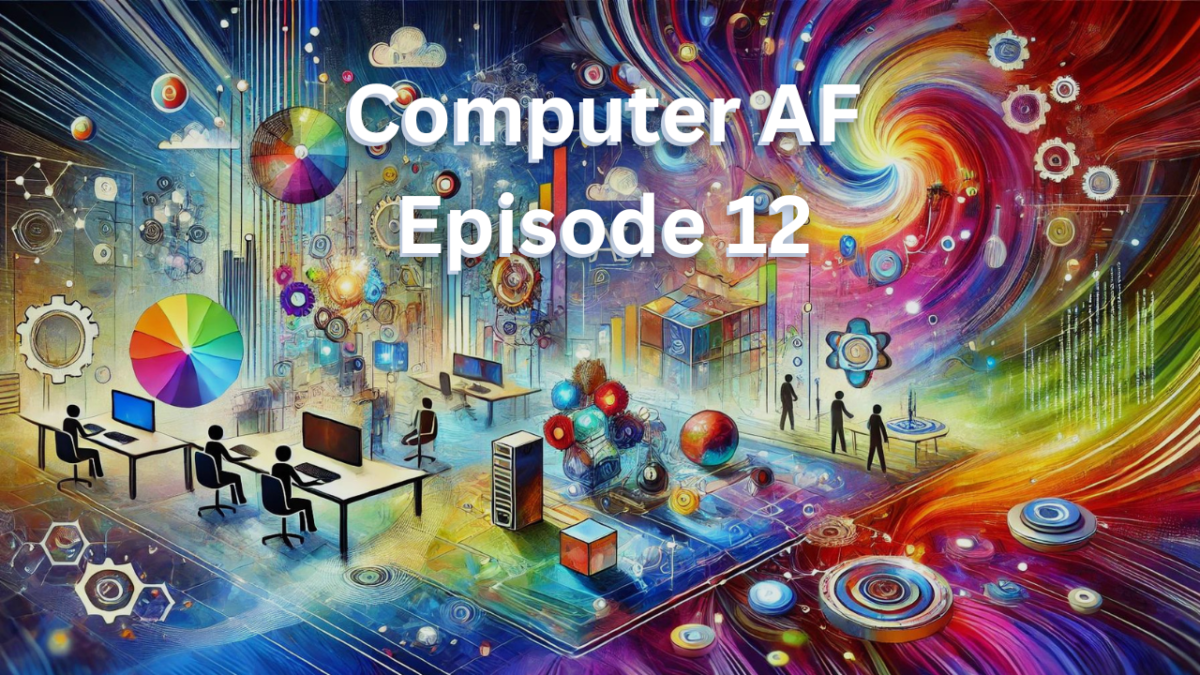In the latest episode of Computer AF, hosts John Boitnott and Anne Ahola Ward dove into topics ranging from Apple Vision Pro and Nvidia to McDonald’s $5 meal deal. So buckle up and prepare to dive into these topics. Oh, and if you want more than insights, make sure to check out the full video available below or on YouTube.
Tech Companies and Their Move Toward Affordability
Tech companies are increasingly prioritizing affordability in their product strategies, a shift that has become necessary due to changing economic conditions and consumer expectations.
Apple, for instance, has decided against launching another high-end model of the Vision Pro, opting instead for a more accessible version. This decision reflects a broader industry trend where companies are recalibrating their offerings to align with the financial realities of their customer base, acknowledging that high prices can alienate potential buyers and suppress market growth.
The change in strategy also suggests a learning curve for tech giants, who have occasionally misjudged market demands. The transition towards more budget-friendly options isn’t just a response to consumer preference but also an outcome of economic uncertainty that has prompted companies to reconsider their pricing models.
By adjusting their portfolios to include less expensive products, companies like Apple are attempting to maintain competitiveness and market share in a landscape where consumer spending power is increasingly fragmented.
The Integration and Challenges of AI in Consumer Technologies
Artificial Intelligence (AI) is already a staple in consumer technology, enhancing user experience and broadening accessibility. Companies are now integrating AI into a variety of products, aiming to simplify complex processes and make technology more user-friendly.
However, this integration comes with significant challenges, particularly in terms of user interface design and the public’s understanding of AI capabilities. The struggle to create intuitive AI representations highlights the ongoing efforts to make technology more approachable and less intimidating to the average consumer.
As AI becomes a common feature in everyday devices, tech companies face the task of educating consumers about its benefits and functionalities. This educational challenge is critical to ensuring that AI technology is not just a novelty but a beneficial addition to consumer products. The difficulty in designing relatable and easy-to-understand icons for AI functions illustrates the broader issue of making advanced technology accessible and useful to all.
As AI continues to evolve, its success in consumer markets will largely depend on how well companies bridge the gap between AI capabilities and consumer perception.
Economic Pressures and Corporate Strategy in Fast Food Industry
The fast food industry is responding to economic pressures by rethinking its pricing strategies to maintain customer loyalty and market reach. McDonald’s introduction of a $5 meal deal is a prime example of how companies are adapting to the financial constraints of their customers. This strategic shift is driven by the recognition that the rising cost of living and stagnant wages have made affordability a critical factor in consumer choices.
By offering budget meals, fast food chains are not only trying to attract price-sensitive customers but also attempting to counteract the perception that their products are becoming prohibitively expensive.
This strategic adjustment is also a reflection of increased competition within the industry, where companies are compelled to offer more for less as a way to stand out. The price hikes in recent years have made even basic fast food meals a significant expense for average families, prompting chains to innovate their menu offerings to offer better value for money.
As companies like McDonald’s, Wendy’s, and Burger King introduce more economically priced meals, they are essentially recalibrating their value propositions to ensure that they can meet a wide array of consumer demands in an increasingly competitive market.
Psychological Impacts of Social Media: Money Dysmorphia
Social media platforms are contributing to a phenomenon known as “money dysmorphia,” where users develop a distorted perception of their financial stability influenced by the lavish lifestyles often depicted online. The disparity between the perceived financial success of others and one’s own economic reality can lead to dissatisfaction and anxiety, exacerbating feelings of financial inadequacy.
In response to these concerns, there are calls for social media platforms to mitigate the negative psychological impacts they have on users. Measures such as limiting notifications and curating feed content to avoid exacerbating users’ insecurities about wealth and lifestyle are being considered as potential strategies.
The Realities of Content Creation in the Influencer Economy
The influencer economy, often perceived as a lucrative career path, is marked by a stark reality where only a small percentage of content creators achieve significant financial success. The vast majority of influencers engage in content creation as a side hustle, with the income generated from these activities rarely sufficient to replace a full-time income.
Further complicating the landscape, the monetization strategies available to influencers, such as sponsored content, merchandise sales, and platform-specific monetization programs, do not guarantee steady income. Even platforms like YouTube and TikTok, which have formalized creator payment schemes, typically only provide substantial earnings to their most popular users.
For most influencers, financial sustainability remains elusive, and the industry’s precarious nature forces many to juggle multiple roles and income streams to make ends meet. This environment challenges the long-term viability of content creation as a standalone career, particularly in an oversaturated market.

